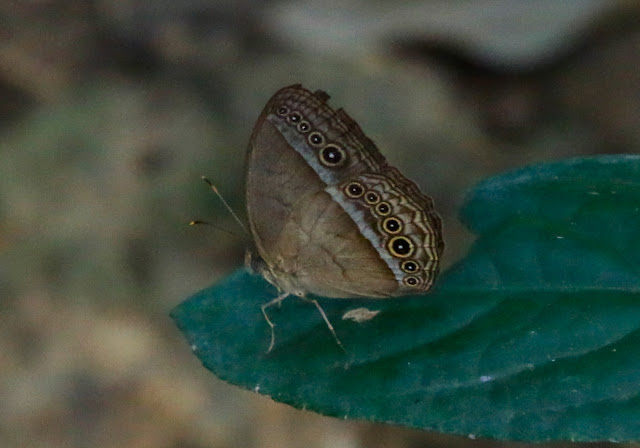The month of March witnessed only a few butterflies due to less trips into the forest and the occasionally raining episodes which coincide with the tailend of the monsoon season. A few nice inflight shots and some new discoveries were the highlights of the day.
Striped Albatross (Appias libythea olferna)
This female Striped Albatross decided to oviposit on a roadside weed.
Striped Albatross (Appias libythea olferna)
This one is a male which I find it even more difficult to photograph due to its non-stop flying. It did paused occasionally but even that it was only for a few seconds.
Chocolate Albatross (Appias lyncida vasava)
This is another female but from a different species.
Another female Chocolate Albatross. They are quite fond of getting their nutrients from these flower buds, as I have observed.
Forest Grass Yellow (Eurema simulatrix tecmessa)
They look quite similar to Chocolate Grass Yellow (Eurema sari) to an untrained eyes.
This is the upperside (Dorsal) view of the Forest Grass Yellow. They are more common in the forest as compared to elsewhere hence their name.
This is an interesting discovery. It is actually a Dophla evelina compta (Red-spot Duke). Its dark coloration is completely out of the textbook. Most likely an aberrant.
Curetis is one of those difficult species of butterfly to identify. You will need to have a clear view of its upper and underside in order to have a positive ID.
Just for comparison, here is another Curetis which was seen earlier. Could it be the above was a female Curetis santana malayica and the one below here is a male?
I will leave them with the status of "to be identified".
A female Common Blue Bottle (Graphium sarpedon luctatius) sipping from a water puddle.
A slightly off coloured Yellow Flash (Rapala domitia domitia)
A prime looking Rustic (Cupha erymanthis)
Here comes the Commander (Moduza procris milonia)
They can be quite common at times but only around the forested regions.
Peacock Royal (Tajuria cippus maxentius) - female
To me the above Peacock Royal is quite uncommon. Seen here on a lime tree.
Another butterfly species to be identified.
Here are a few comparison of some butterflies which may look alike but they are actually quite different.
Common Cerulean White Cerulean 

Some readers say the above is some Nacaduba but I believe it is a Jamides talinga talinga (Lesser cerulean). My prediction was based on its small size and its hindwing stripes.
I shall end this month's post with a sequence of the flight of a Painted Jezebel (Delias hyparete metarete)
Here you can see its approach towards a lime tree.
As it flew nearer, it decided to fly further up.
About to land.
Touch down.
THAT'S ALL FOR THIS MONTH'S POST.
UNTIL THE NEXT TIME ENJOY YOUR BUTTERFLY ADVENTURES.































































